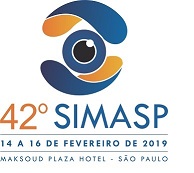Dados do Trabalho
Título
EPIDEMIOLOGICAL ANALYSIS OF POST PENETRANT TRAUMA ENDOPHTHALMITIS EVALUATED IN A TERTIARY BRAZILIAN HOSPITAL IN 6 YEARS
Introdução
Endophthalmitis is a severe inflammatory ocular disease with profound vision commitment that may lead to irreversible vision loss and requires immediate treatment. Post-traumatic endophthalmitis incidence rate can reach 16.5%. Our study objective was to evaluate epidemiology of endophthalmitis cases related with penetrant ocular trauma, visual acuity during endophthalmitis and one year after, the presence or absence of intraocular foreign body (IOFB), material of intraocular foreign body and treatment.
Métodos
Retrospective study that analyzed patients who underwent emergency sector evaluation and were submitted to intravitreous or anterior chamber collect due to acute endophthalmitis suspect and compatible history of ocular penetrant trauma from January of 2012 to January of 2017, at Escola Paulista de Medicina / UNIFESP. We compared in patients age, gender, eye, time until first evaluation, cultures results, etiological agent, trauma mechanism, visual acuity during endophthalmitis episode and one year after endophthalmitis.
Resultados
453 patients were evaluated with history of open globe trauma with or without intraocular foreign body. Thirty patients (6.62%) presented clinical exam compatible with acute infectious endophtalmitis and positive vitreous or aqueous culture after open globe injure. Mean patients age of 42.26 years (7-80 years). All patients are male, with eleven cases involving right eye (36.66%) and nineteen cases involving left eye (63.33%). Time between trauma event and search for medical cara and collection of vitreous and aqueous material ranged between one day in 36.66% of cases, two to seven days in 43.44% of cases, seven to fourteen days in 10% of cases and more than fifteen days in 10% of cases. Thirty patients, twenty (66.66%) presented positive cultures. Five of these twenty cultures of aqueous humor (40%), seventeen of vitreous culture (85%) and two of both aqueous and vitreous positive culture (10%)
Conclusões
Epidemiological diseases analysis are fundamental to guide treatment and better understand association between trauma mechanism, trauma agent, time until treatment and visual acuity to establish visual prognosis and to prevent future traumas and to deal better with similar situations. This is the first Brazilian study that evaluate endophthalmitis cases after ocular trauma with intraocular foreign body, evaluated in a tertiary hospital. The high incidence of acute endophthamitis after trauma justify the distinct evaluation of these patients.
Palavras Chave
Endophthalmitis; Epidemiology;
Arquivos
Área
Retina
Instituições
ESCOLA PAULISTA DE MEDICINA - São Paulo - Brasil
Autores
VINICIUS CAMPOS BERGAMO, LUIS FILIPE NAKAYAMA, LUCAS DENADAI, NILVA SIMEREN BUENO DE MORAES
